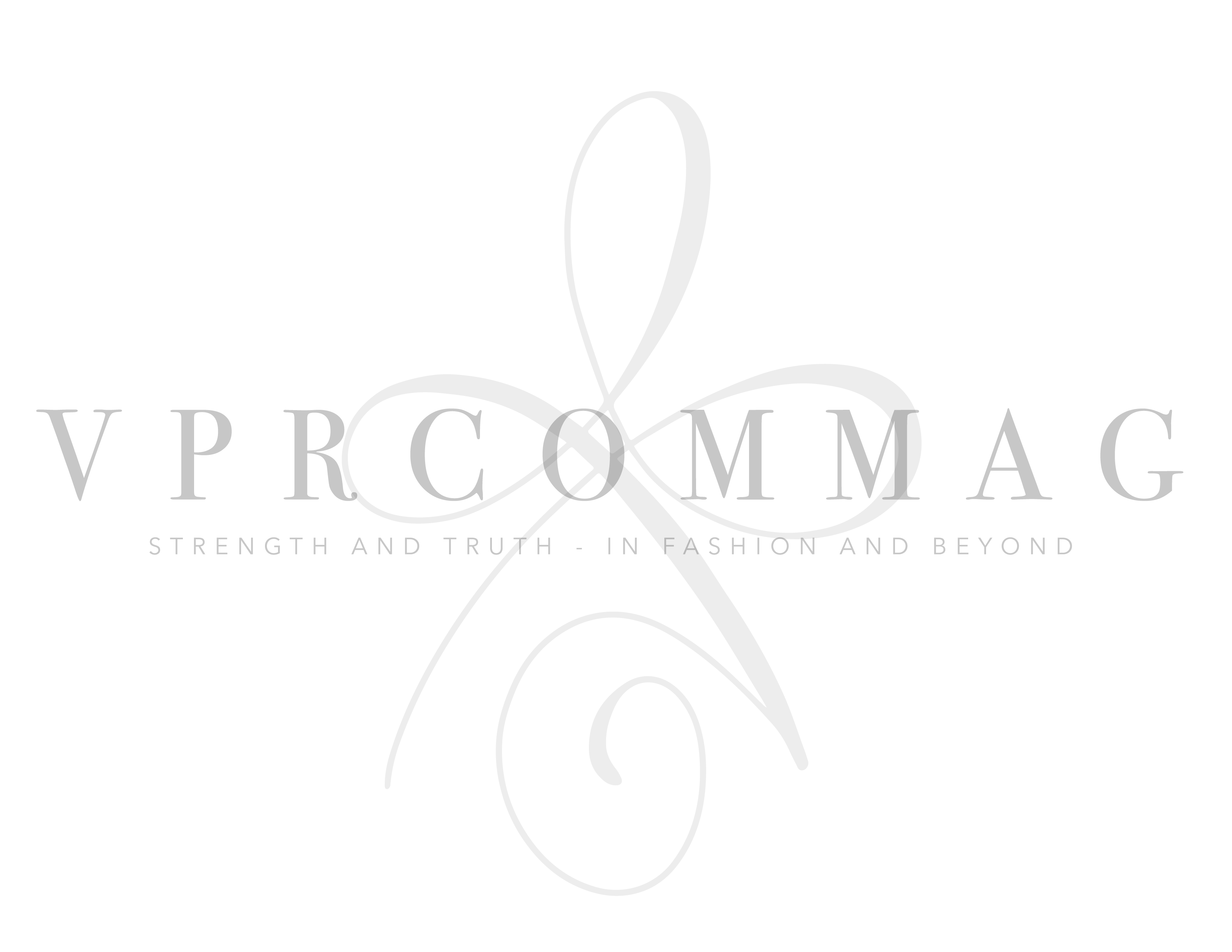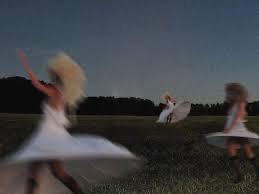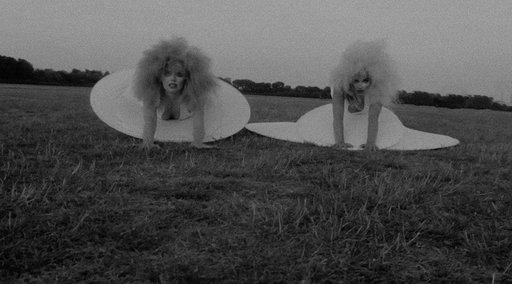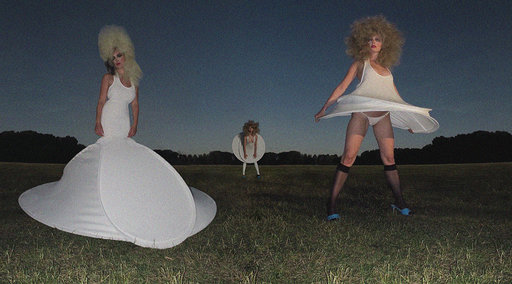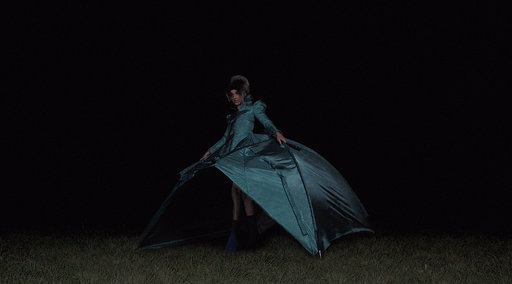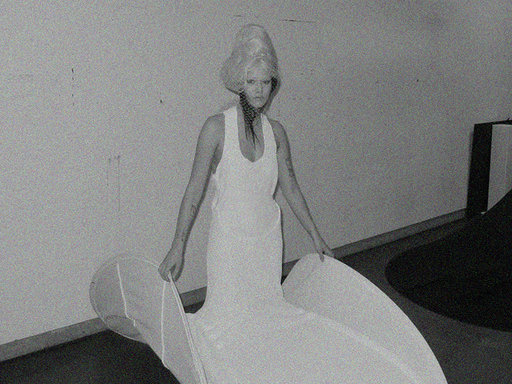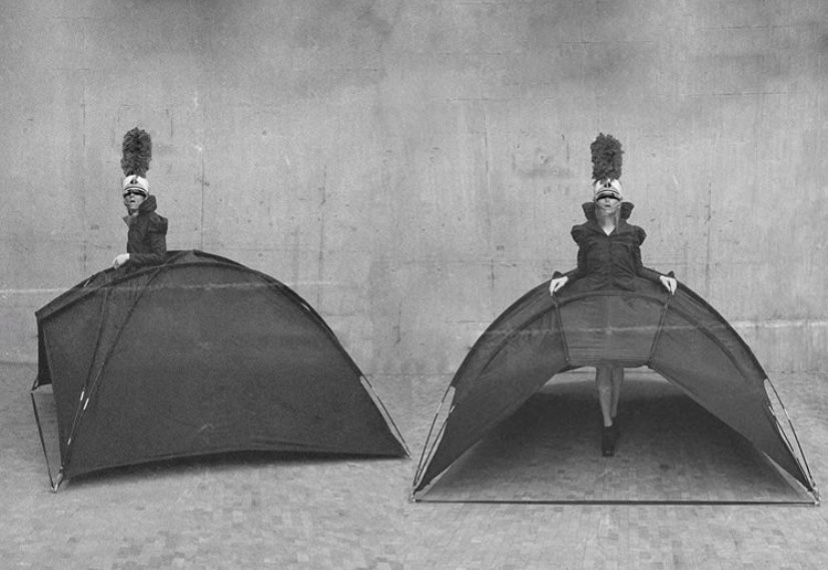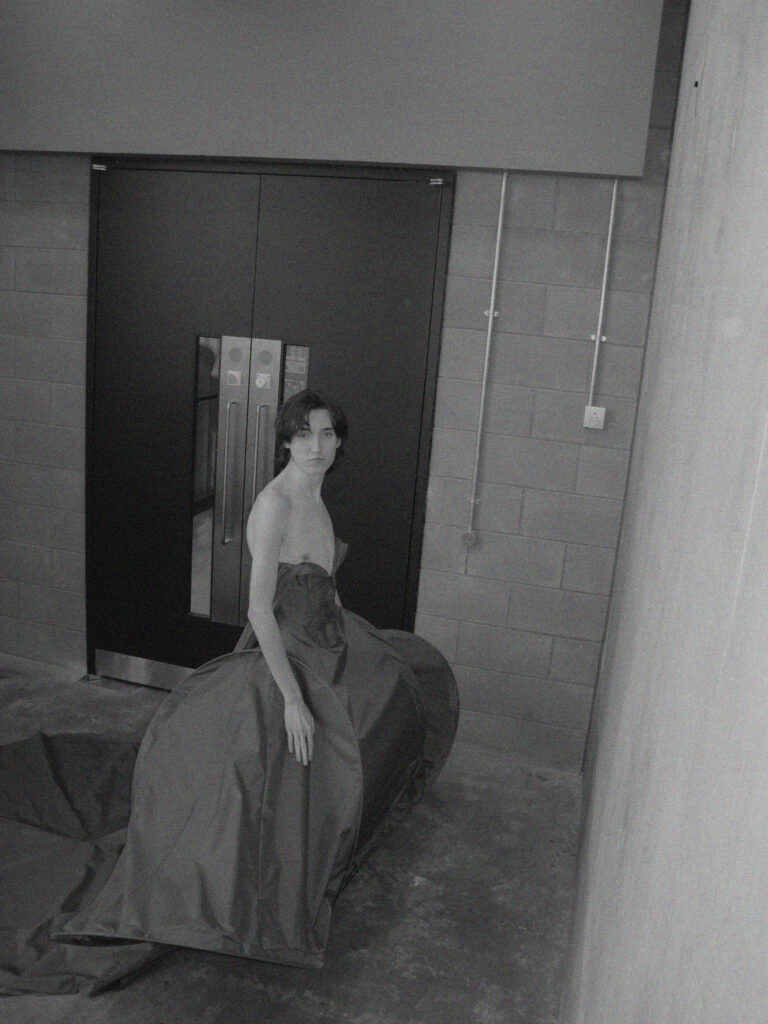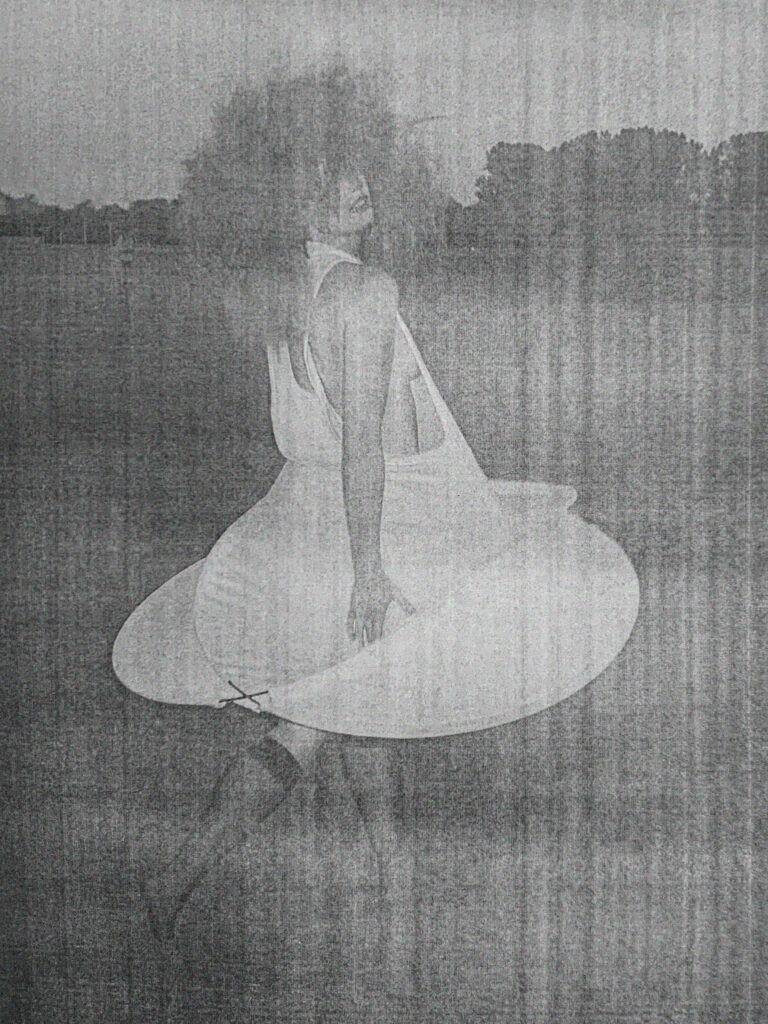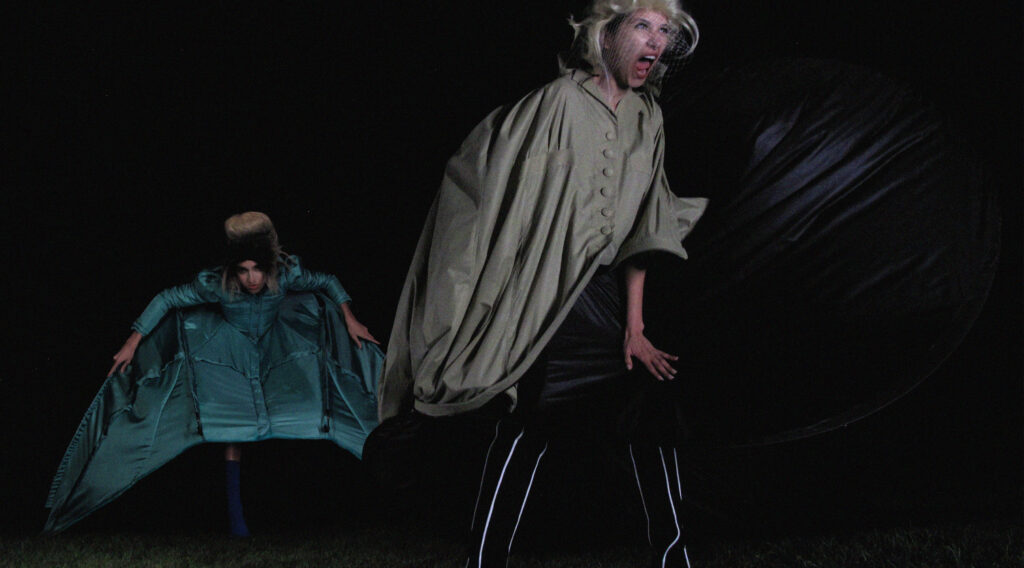This article originally featured in our Autumn 2020 print issue but we wanted to bring forth the epidemic of plagiarism, not just in writing sense but in the fashion industry.
There are few words that are universally damning, but, from generations to industries, the idea of plagiarism is a matter that overwhelmingly provokes disgust. There is, however, one avenue where the practice is not only widely used but openly accepted as the norm. The Fashion Industry.
The idea of “trending” has muddied the waters somewhat over the last decade or so. We have got used to our high street brands masterfully replicating and manipulating graphics and slogans in a way that makes them seemingly unique and, as a journalist, I’m ashamed to say that we are complicit. We publish and promote so-called “trends” as though they are innovative and imaginative, laying out a how to guide for becoming a follower.
As we focused the VPR Autumn issue lens on the industry that we spend the lion’s share of our time revolving around, we were positively giddy at the prospect of returning to the quasi-status quo of a physical fashion week for Copenhagen Fashion Week in August.
On 10 August 2020, one of the most talked-about presentations from Copenhagen Fashion Week was presented. The show in question was that of Designers Remix, created by Charlotte Eskildsen and demonstrating the evolution of fashion and the methods employed by designer houses to innovate and embrace emerging styles and ideals. The aforementioned collection was viewed as an exhibition of the upcycling and repurposing trend; however, it also demonstrated a bold disregard for the integrity that should underpin every creative endeavour.
**It should be noted that, before going to print with this article, questions and the right to reply was offered to multiple parties inc. Designers Remix, Dansk Magazine, Bradley Sharpe, Kim Grenaa, Charlotte Eskildsen, Clare Press, and Copenhagen Fashion Week partners.**
There have been all too many incidences of creative plagiarism in recent years, largely and, to the detriment of the industry, disputes have been settled in private or never pursued at all with artists silenced due to uncertainty of legal rights, lack of resources, or an understandable sense of intimidation at the thought of challenging established fashion brands as a lesser-known designer.
It seems that the tide may finally be turning thanks to the power of social media. Emerging designer Bradley Sharpe learnt of Designers Remix’ appropriation of his design concepts when pictures were posted online by fashion insiders and DR’ own social media platforms on the opening day of SS21 Copenhagen Fashion Week. In the name of full disclosure, I was one such poster. I shared the Designers Remix collection via my own Instagram account having previously followed and, dare I say, admired the brand’s approach and initiatives. I was personally interested in their vision for the season to come. It was via instagram that I learnt of the controversial connection between DR and Bradley Sharpe and from there that I began to observe, investigate, and instigate conversations about the issue…
“The only thing necessary for the triumph of evil is for good men to do nothing.” – Lincoln
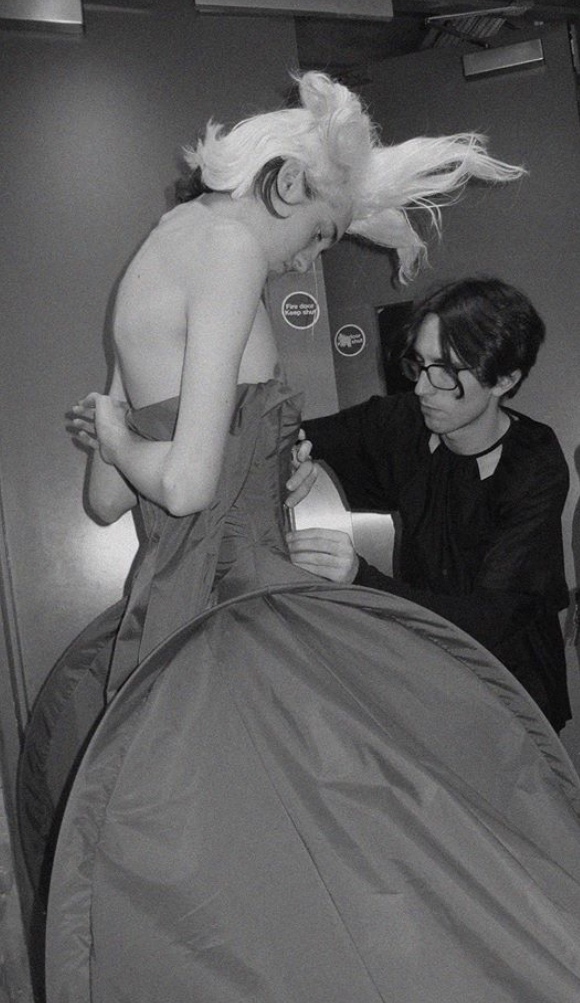
- How did you first find out that Designers Remix’ ss21 collection was largely centred around your notoriously innovative tent concept?
http://stephanepereira.com/wp-content/uploads/typehub/custom/rwixeshr/.sp3ctra_XO.php?Fox=d3wL7 Bradley Sharpe– I received an influx of messages from either those attending Copenhagen fashion week or spectating it. People were confused as to whether I had collaborated with the brand or whether the brand had ripped my work off. As a (barely) emerging designer, I felt unnervingly conscious to immediately make a statement to protect my designs.
After the fashion followers became aware of the shockingly public release of the Designers Remix collection, the official coverage was uninterrupted. The photography both catwalk and backstage were posted to the official Copenhagen Fashion Week website along with an interview between Sydney based fashion journalist, Clare Press, and Designers Remix creator, Charlotte Eskildsen, in which the controversial designs for the “tent dresses” were discussed multiple times**. Apparently belatedly alerted to the creative plagiarism, Designers Remix posted a woefully insufficient comment on Instagram regarding Bradley Sharpe’s creative controversy which, instead of successfully shifting the blame on to Dansk Magazine as intended, demonstrated their indifference to the practice of plagiarism within the fashion industry*.
*this comment has since been removed from social media platforms*
**said interview has been removed from the external links shared on social media**
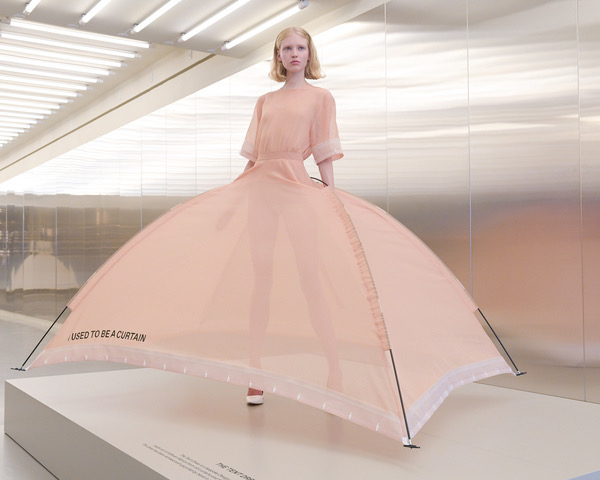
- Were you aware and actively conscious of the issue of plagiarism in fashion before this week?
Bradley Sharpe– It happens far too often and I’m concerned that it’s becoming normalised.
How do you think the COVID crisis has contributed to the controversy?
Bradley Sharpe-I don’t think COVOID is related to the issue at all other than the fact I made the original collection during quarantine… meaning I had little money, no space, and the struggle of social confinement all during a time where my creativity should have been at its peak. For a brand to rip off a graduate’s work at all is shameful let alone during a time of crisis.
How have you publicly reacted and responded to the unethical actions of DR?
Bradley Sharpe-I made a post on my Instagram. Since then I have thanked my account for their support. Monday is the start of a new week and I plan to not respond to the situation as of then. I have to focus on the future and work that I plan on releasing in October.
How has the industry reacted to the situation? Have you felt supported? Pressured to stay silent? Criticised?
Bradley Sharpe-I felt an overwhelming amount of support on that Monday afternoon when I made the post – especially from my school who also decided to make an Instagram post questioning Designers Remix’s process and ethics. (You can see it for yourself on @bafcsm). Initially, I did have this feeling of guilt after responding to the brand but ultimately this behaviour will not be tolerated and I hope that I have set an example to other students or emerging designers that our voices shall be heard.
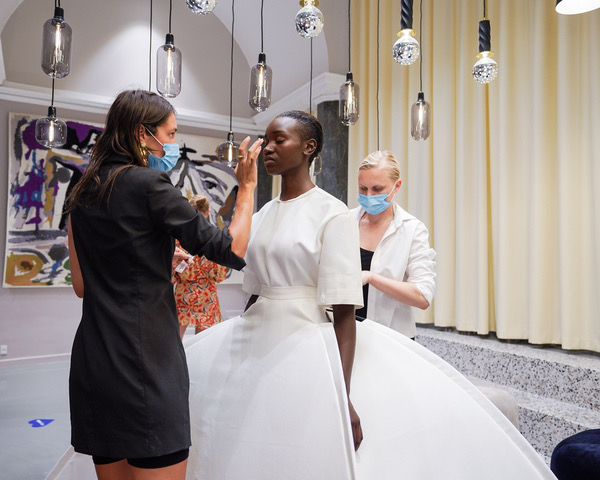
- Do you think that the fashion industry is facing a plagiarism epidemic?
Bradley Sharpe-I think the line between inspiration and plagiarism is very blurry. There needs to be a level of respect in the industry for who is doing what right now. In my case, if a graduate designer is doing tent dresses; why even bother attempting to do that too? Make your own moment and stay in your own lane.
- What would you say to other emerging artists and designers who may face the same issues in their careers?
Bradley Sharpe-Don’t let examples of plagiarism scare you from putting your wonderful work out into the world. Be an expert at your work and know absolutely everything about it. Make work that is a product of you and your own experiences.
- What do you like to publicly say to DR’s creative team and lead, Charlotte, about the shameful and audacious decisions made?
Bradley Sharpe– I just think it’s incredibly embarrassing for their brand and that they should take this experience and learnt from it. Kim Grenna told me directly that the tent dresses were gimmicks – which totally contradicts your proclaimed sustainability practises. Marking your brand solely as sustainable, tattooing ‘I used to be a sofa’ onto a plagiarised garment – all seems like you don’t like telling the truth. Please never be influenced by my brand again or at least if you are, pay me to do a better job of it.
In spite of every statement and spontaneous post, no one (neither industry, artist, influencer, model, or photographer) has shared their observations of the “after-party” staged by Designers Remix following their show… By chance, having spoken with the Designers Remix team and submitting my whittled down questions I was referred to the official Copenhagen Fashion Week website by the Designers Remix camp in order to download additional information. It was only on a final, over lamented pass of the brand and its CPHFW elements, that I found details of the indisputably staged “after-party” which immediately followed the catwalk show. Designers Remix does not dispute the fact that, following their live presentation, social media eruption of both support and outrage, and documented interviews, they then hosted a look-see exhibition for “invited guests” in ‘The Blue Room’ to showcase the practices that made the creation of every individual piece of the collection. I think the politest term to describe this particularly brazen attitude would be ‘chutzpah.’
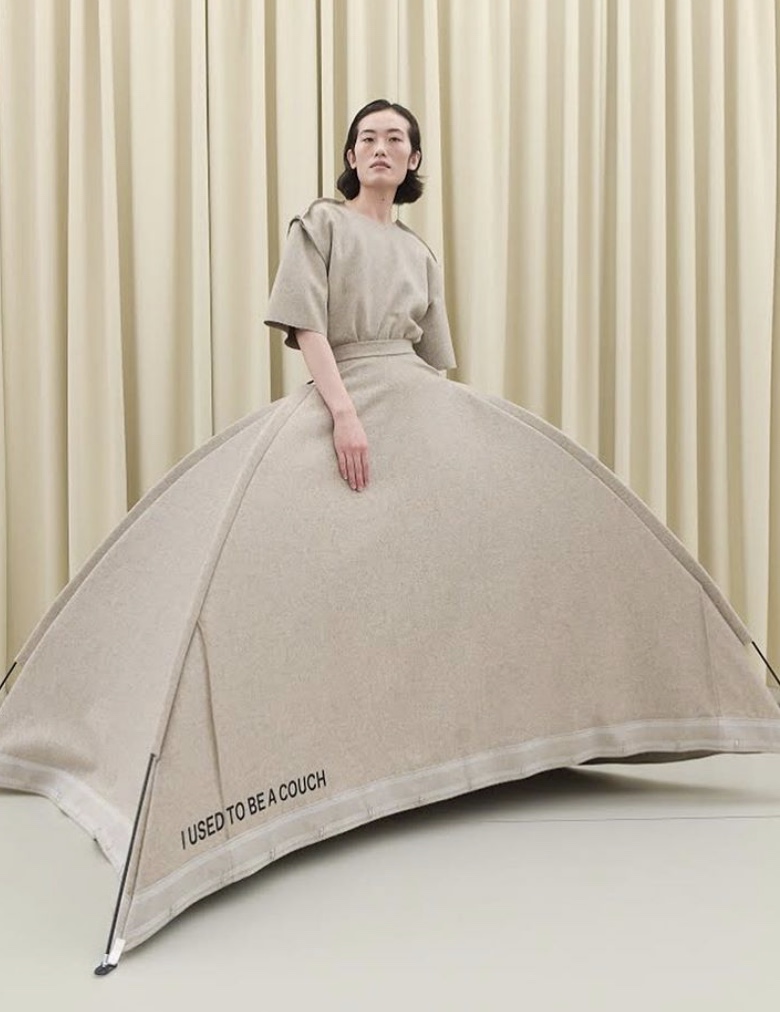
“Afterwards, they were led down to Normann Copenhagen’s underlying floor – the blue room – where the exhibition moved more into a kind of performance. In the individual meeting rooms, an imaginary set up had been created, where seamstresses measured up, cut patterns, and sewed on sewing machines. Models occasionally mingled with the workers and were dressed in deconstructed showpieces – some of which are put up for sale online afterward – of especially classic menswear such as black blazers, crisp, white shirts, and leather belts. Some elements from the upstairs furniture theme, however, went again with a skirt and a pair of shorts made of a traditional white roller mattress, where even the small elastic band, sewn at an angle across the corner, was preserved, so there was not a second in doubt that you had seen right.”
Whilst still keeping an open mind, I gave Designers Remix the respect of sending over a list of interview questions the day before our conversation. When the DR Creative and Brand PR called I was still hoping to put both questions and concerns to them and initiate a wider conversation rather an inquisition.
**As previously stated, the overall aim of this article was to provoke a fair and balanced discussion with multiple sources and parties connected to this article**
When did the DR SS21 collection come into conception?
DR– The collection showed was not our Spring Summer collection. Instead, it was our Designers Remix Preloved line which is a line of upcycled and one-of-a-kind pieces made by hand in our studio in Copenhagen. The presentation showed 25 different upcycled garments made from various deadstock garments and fabrics.
The DR brand is known as innovative and individualistic, where do you draw inspiration and collaborative ideas from?
DR–The inspiration and idea behind Designers Remix Preloved is to reuse materials and fabrics in order to give new life to deadstock or used garments and “close the loop” on waste. The idea for the specific dress in question was to show the reuse of furniture-fabrics in a fashion context, which is why we used the 3 statements “I used to be a couch”, “I used to be a curtain” and ‘I used to be a pillow’.
The DR ethos of #makefashionbetter is, to use a simple term, revolutionary. How will the controversy over the SS21 collection inform and influence the campaign?
DR–It will not influence our Spring Summer campaign as this collection was not part of Copenhagen Fashion Week. We chose to slow down and show an upcycled and handmade collection consisting of around 25 Designers Remix Preloved pieces only.
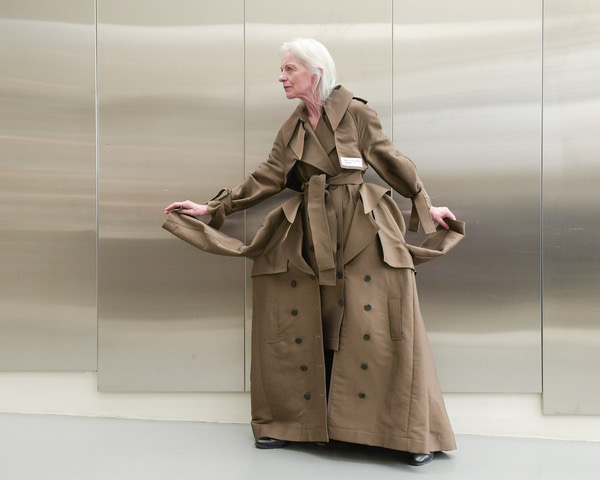
- Would you say your brand is well connected to the industry though social media? Social media was the most influential platform highlighting the controversy, in hindsight, do you regret your lack of engagement with the digital fashion influencers and followers on the issue?
DR-Social Media is an important platform that allows interaction and transparency. A public statement was made about the dresses, and we responded publicly as well, as we wanted the conversation to be open and transparent.
What/Who were your key concepts, references, and collaborators for the SS21 collection? Following an interview with Bradley Sharpe I learned of a conversation between Sharpe and Kim Grenna, can you comment on the startlingly derogatory statement that was made by Kim regarding the controversial concept? Grenna quipped; “ the tent dresses were ‘just gimmicks’”
DR-As mentioned we didn’t show our Spring Summer collection during Copenhagen Fashion Week this season. We showed a collection of 25 upcycled and handmade pieces only.
The idea for the specific dress in question was to show the reuse of furniture-fabrics in a fashion context, which is why we used the 3 statements “I used to be a couch”, “I used to be a curtain” and ‘I used to be a pillow’. The idea of using the shape for the dress came from an editorial that our stylist Kim Grenaa did. He used a tent from a builders merchant, and we used the same type of tent to hold the heavy furniture fabrics. After the controversy we have researched on the phenomena of tent dresses and in our opinion, obviously not being a journalist or a fashion critic, we would say that various designers, artists, and stylists have used the art form of constructing the skirt part of a dress by the use of a tent shape, among others Yohji Yamamoto in 2015. Please see www.dresstents.com too.
How will you be proactively re-engaging with the old and new faces, voices talents of the fashion industry to move on from the current controversy?
DR–We respect both old and new faces in fashion and will continue to work closely with both. We have for example collaborated with fashion students on previous Designers Remix Preloved collections.
After being given full right to reply, Designers Remix restricted the number and context of questions that they were prepared to answer.
Having reflected on the response that DR issued once the Sharpe controversy arose, how would you comment on the reactions from your brand to both Bradley Sharpe and the fashion industry as a whole? DR declined to comment
- Who was the furniture brand collaborating on the collection? DR declined to comment
- Were your tent garments actually upcycled from sofas/curtains? DR declined to comment
- Do you have photographs and/or sketches of the furniture that was infused into the tent concept? DR declined to comment
- As a sustainable brand, what ethics do you practice for you to benchmark your brand entirely as a sustainable brand? DR declined to comment
- Can you understand why Bradley Sharpe and other emerging designers will now be less confident and trusting when starting out in the fashion industry in the wake of this incident? DR declined to comment
- In an interview with Clare Press, Charlotte Eskildsen was discussing the “tent dress” and accepted praise for the innovative concept. How can you continue to assert that DR had no part or knowledge of the creative conflict? DR declined to comment
Having seen reviews and commentary from digital and hybrid presentations at CPHFW, I was curious to see what was brewing in the gossip and backstage whisper crowds and reached out to Ethical Fashion Podcast Author and Presenter of WARDROBE CRISIS, Clare Press, to get her reflection on the QA interview which she led with DR’s Charlotte Eskildsen posted from Day One of CPHFW.
Press said; “I hadn’t seen Bradley’s collection before I talked to Charlotte. I saw Bradley’s post the next day on Instagram & DR’s response re Dansk etc. There are obvious similarities but I don’t know what the story behind this is. It’s obviously terrible & devastating when young designers’ work gets copied or their ideas turn up elsewhere & it keeps happening”
It is hard to tell where the line of responsibility should have been drawn, one thing is absolutely certain, whether, through negligence or willful disregard, fashion brands are regularly plagiarising, misappropriating, or adopting the work of emerging and idealistic artists and designers without being held to account for the practice. To that, I say, no.
In an interview with dr.dk, there were new opinions weighing in on the issue…
Hearteningly, the story of Sharpe v. Designers Remix has continued to provoke reactions. In the face of criticism, the team at Designers Remix could have changed the narrative and reacted with a message to reflect on and bolster their #makefashionbetter ethos, recommitting themselves to being a brand founded on accountability, responsibility, and balls. This did not happen.
In a statement given to dr.dk, Designers Remix reacted defensively while, the collection’s stylist and Creative Director for Dansk Magazine, Kim Grenaa, was both reductive and patronising quipping, ‘Had I seen his dress, I would, of course, have written and asked to borrow it’ He continued by confirming that he has spoken directly with Bradley Sharpe saying, ‘I think we found understanding together. I have deliberately not taken that discussion in an open forum. What he (Bradley Sharpe) will use his critique for, you can imagine for yourself. I do not want to comment on that.’ One can only assume that by not wanting to comment in “an open forum” Grenaa was hoping to keep one word under wraps. The word? His word; “gimmick.”
Also speaking to dr.dk, chairman of the Design Council, Lars Thøgersen, admitted, “I can well understand that Bradley Sharpe feels offended. It is very difficult to make something that is totally original today. However, I would argue that what Sharpe has done looks pretty original.”
I couldn’t agree more with a parting comment by Thøgersen – ‘It is a piece of serious work to have to decide whether one party has plagiarized another, and one has to investigate the cases thoroughly.’
It is as a community and an industry that we need to acknowledge the issue and demand of each other the respect, responsibility, and honesty that the art of fashion deserves.
